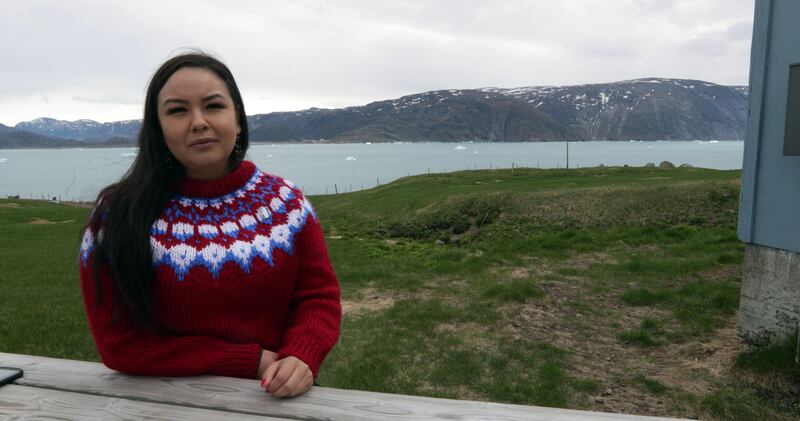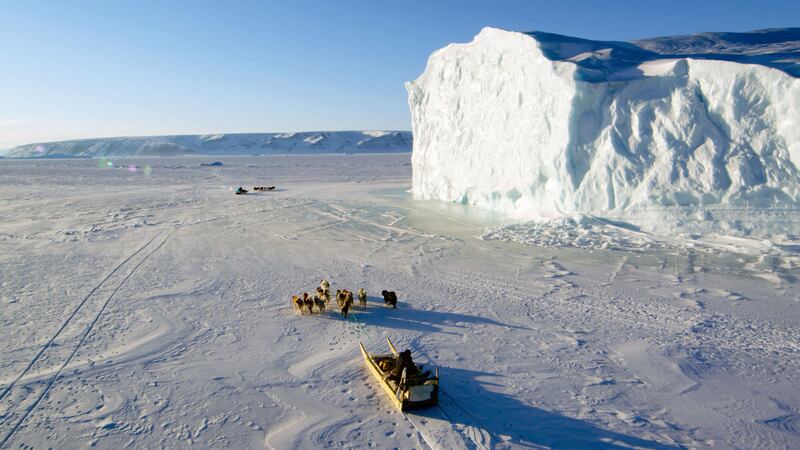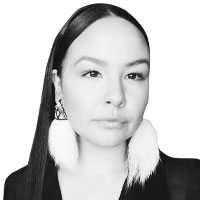Inuit have lived in Inuit Nunaat (our homeland) in the Arctic for millennia, in what many see as one of the most inhospitable areas of the planet. To outsiders, we’re survivors, having managed to beat the odds generation after generation. But that’s not how we see it. Inuit don’t survive in the Arctic—we thrive.
Our skilled hunters have knowledge that has been passed down for generations, allowing us to sustainably harvest nutritious meat for our families and communities. We know how to read the weather, navigate the sea ice, find vegetation on the land, and, in 2020, how to connect with one another virtually to share this same information. We adapt and thrive together.
But our recent history has been one of immense challenges, brought on not because we live in a polar region but because of the arrival of the outside world and their interests. Beginning around the time of World War II, international interest in Inuit Nunaat in the Arctic exploded—at first for geopolitical reasons of sovereign land claims, and then or military purposes. Soon after, varied interests around the world began to see our resources, whether it was oil, efficient shipping routes, or abundant fish stocks.
As this interest in the Arctic world accelerated, Inuit were subjected to horrific and traumatic treatment by our governments and religious institutions. While newsreels celebrated intrepid explorers conquering the Arctic, countless untold stories were unfolding that still echo in Inuit communities today: Children taken from their families and placed in residential schools to become “civilized,” families forcibly relocated to communities where they had little if any knowledge or relations in the name of Arctic Sovereignty, my peoples’ names replaced with numbered dog tags. The list goes on and on.
These atrocities didn’t happen centuries ago. They happened to our parents and to our grandparents. And while Inuit still adapt and thrive, today we’re dealing with a less obvious threat. Climate change is rapidly warming the Arctic, melting our sea ice, making our weather less predictable, affecting the wildlife around us, and threatening our overall way of life.
Our communities are only accessible by air, and in warmer seasons by boat. In the majority of the Arctic, raising livestock isn’t realistic, and neither is wide-scale agriculture. The cost of importing food is prohibitively high, resulting in seven of 10 Inuit in Nunavut being food-insecure. We are still dependent on the natural world to sustain us, but climate change is altering it at a rate that’s harder and harder to adapt to.

Maatalii Okalik, the author and subject of the NatGeo doc The Last Ice
National GeographicWhen a seasoned hunter falls through the ice because it no longer forms the way it has for generations before, that’s not a political issue, it’s a matter of survival. Climate change doesn’t respect political borders or opinions, and we’re on the front lines of seeing the effects.
Today, our disappearing ice is attracting new outsiders, interested in previously inaccessible shipping routes, resources to extract, and profit to be made. But Inuit are once again lost in the international conversation, as news headlines focus on polar bears, scientists, and statistics.
I’ve seen these changes firsthand. I remember speaking with a woman whose husband died when he fell through the ice. His body was never recovered and she had to hold his funeral without having a chance to bury him. His loss didn’t just impact their family, but the entire community that he helped support and feed.
These kinds of stories are more common than what you read in the newspaper. There are very real human impacts on Inuit as the climate changes. As the melting ice changes the landscapes we’ve lived on for generations, we are fighting to maintain our communities’ wellbeing and preserve access to the lands of our ancestors to hunt. When we can’t rely on our main source of food, when it is depleted by the actions of outsiders, that just exacerbates the growing threat to our survival.
Prior to outsiders arriving, Inuit managed resources in ways that were and continue to be sustainable, responsible, and respectful, as countless thousands of Indigenous peoples continue to do throughout the world. This is no accident, and as the rest of the world begins to experience the global, interconnected consequences of climate change, I feel that we have so much knowledge to share.

The Arctic is not the final frontier. The Arctic is not a magical land at the end of the Earth. The Arctic is our home, and we as Inuit should have the right to decide what happens here. Everything that we are experiencing today are symptoms of our history. Many Inuit live in overcrowded homes. Many Inuit are food-insecure. We have one of the highest suicide rates in the world.
And yet, despite these challenges, we still sustain ourselves from the incredible natural world and resources surrounding us. Not as something for us to conquer or take, but as something we’re a part of. Our language and our culture and way of life is so connected to our land, our water, and our ice.
Inuit have been ringing the alarm bells of climate change for decades, and we hope that the world will begin to learn from us. To make decisions based on what’s best for decades and centuries from now rather than days and weeks. To thrive, and not just survive.

